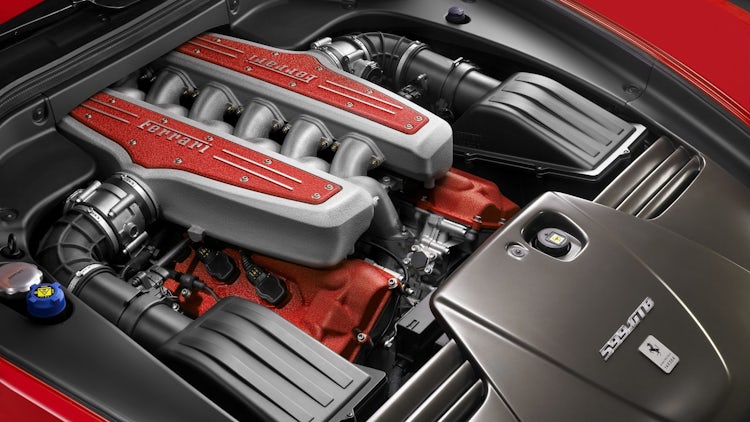The V12 engine is arguably the pinnacle of automotive engineering; we pick six of the best
Nobody needs V12 engines. They’re time-consuming to design and engineer, expensive and complex to build, use a lot of fuel, are built in tiny numbers and, from a functional standpoint, could easily be replaced by a sensible 1.6-litre four-cylinder, maybe with a small turbocharger or mild hybrid system for added pep.
But what’s the point of a soufflé when you could have an egg sandwich? Why have an automatic wristwatch when a £10 digital timepiece performs the same task? What function does an impressionist painting perform?
V12 engines are mechanical confections that remind us both that focussing on functionality misses much from life, and that the art is not a discrete field, but rather one that crosses over into countless areas, including engineering.
The mechanical precision, emotion-provoking performance and dopamine-releasing acoustics offered by V12 engines mean they will always have their place, even as the car industry moves to a place where all new models will be driven by electric power.
1. BMW S70/2

Car: McLaren F1
Date: 1993-98
Displacement: 6.1 litres
Power: 627hp
The McLaren F1 can arguably be described as the finest car ever made, and a similar assessment could be made of its engine.
The number of people to have driven the F1 is small so most impressions of it are second-hand but, even from a distance, its V12 engine is a masterpiece.
Producing 627hp, a figure that would be sufficient for a modern supercar, the F1’s engine, designed by BMW, made its power without the use of turbochargers, while magnesium components, a dry-sump lubrication system and 12 individual throttle bodies only added to its exotic pedigree.
Performance was, and is, nothing short of extraordinary, with 0-60mph taking just 3.2 seconds and a top speed of 241mph. If any further proof of the crossover between art and engineering were needed, the S70/2’s bay was lined in gold leaf for heat insulation, a design choice that produced an effect not dissimilar to that of a Fabergé egg.
2. Ferrari Tipo 140

Car: various, incl Enzo, 599, LaFerrari
Date: 2002-present
Displacement: 6.0 to 6.5 litres
Power: 620-840hp
The Tipo 140 has been in service for 20 years, debuting in the Ferrari Enzo of 2002 and featured in a variety of cars including the 599, the LaFerrari and, more recently, the Purosangue SUV.
What makes the 140 so special? Well, aside from being the powerplant for some of the fastest, most iconic cars ever made, the 140 sounds symphonic, pulls from right down in the lower reaches of the rev range up to well past 8,000rpm, looks astonishing with its crackle-finish and is, some consider, the archetypal V12.
3. Mercedes M120

Car: various, incl S-Class, CL, SL, plus Pagani Zonda
Date: 2002-present
Displacement: 6.0 to 7.3 litres
Power: 394-802hp
Take a quick look at the range of cars fitted with the M120 engine, and the broad span of the power outputs it offers, and you’ll be left in little doubt that it’s a special engine.
Debuting as the flagship engine of the Mercedes S-Class range, where it embodied millpond-smooth performance, the M120 was later adapted for the Pagani Zonda supercar, where it was tuned to produce anything from 408 to 802hp. Oh, and it also powered the Mercedes CLK GTR racecar, which was also offered as a road-going production model.
The good news is that if you want an M140 engine today (alongside a car to go with it), you can pick up a Mercedes S-Class S600 from the early 1990s for around £25,000. And while that’s a fair chunk of change, it does mean access to this legendary V12 engine is a little more within reach than the BMW S70/2…
4. Toyota GZ

Car: Toyota Century
Date: 1997-2017
Displacement: 5.0 litre
Power: 280hp
While the Mercedes M120 above found itself in various cars, the Toyota GZ (or 1GZ-FE, to give it its full title) was used in only one: the second-generation Toyota Century.
The Century is Japan’s answer to Rolls-Royce, being reserved (read: priced) for government leaders and high-ranking businessmen and women, and with a focus on discrete rather than overt luxury. The Century Royal, meanwhile, is the official state car of the Emperor of Japan.
But this list is about engines rather than cars, so why is the GZ here? Well, it warrants a place as Japan’s only mass-produced V12 engine, for one thing, while its smoothness and reliability are legendary.
The GZ exemplified the phrase ‘over-engineered’ thanks to a number of sophisticated characteristics, including the ability to run on only six cylinders if something went wrong with one of its banks (which it never did). Oh, and as if to prove its durability, some tuners have got 1,000hp out of the GZ.
5. Jaguar V12

Car: various, incl the Jaguar E-Type, XJS and XJ
Date: 1971-1997
Displacement: 5.3 to 7.0 litres
Power: 245-760hp
All of the engines so far on this list have code names, but the Jaguar V12 is simply the Jaguar V12. In production from 1971 to 1997, the V12 was only Jaguar’s second engine, and it made its first appearance in a fitting car, the legendary E-Type.
Later featuring in the Jaguar XJ luxury car as well as XJR racers, the Jaguar V12 could be silky smooth when it needed to be (it was the powerplant of the Queen Mother’s XJ Vanden Plas, no less), and raucously potent enough to power the XJR-12 to victory in 1990 24 Hours of Le Mans.
One quick aside: while unquestionably an impressive engine, the Jaguar V12 was not necessarily good looking (particularly later versions), typically resting in a tightly packed engine bay with pipes, wires and control lines galore.
This gave rise to the joke: “How do you know if you’ve put a Jaguar V12 back together properly? Pour a bucket of water over it. If any drips out the bottom, you’ve forgotten something.”
6. Lamborghini Bizzarrini

Car: various, incl 350 GT and Murcielago
Date: 1963-2010
Displacement: 3.5-6.5 litres
Power: 284-670hp
We’ve mentioned that V12 engines tend to sound rather good, but we’ll defer to Lamborghini to do justice to the noise – here’s the firm describing its Bizzarini V12: “Each of the 12 cylinders has to move in harmony with the others, like a series of 12 violins playing in crescendo, gear after gear”.
The Bizzarrini V12 arrived, making its own fanfare, in 1963 under the bonnet of Lamborghini’s first car, the 350 GT. After that it featured in the Miura, the Espada, the Countach and the Diablo to name but a few, before bowing out in the Murcielago, after almost half a century of service.
The Lamborghini Bizzarrini V12 grew from 3.5 to 6.5 litres over its various iterations, proving itself as adaptable as it was potent and sonorous. One interesting note: Giotto Bizzarini received a flat fee for designing the engine that took his name, but negotiated a bonus for every horsepower it developed over Ferrari’s contemporary V12.
